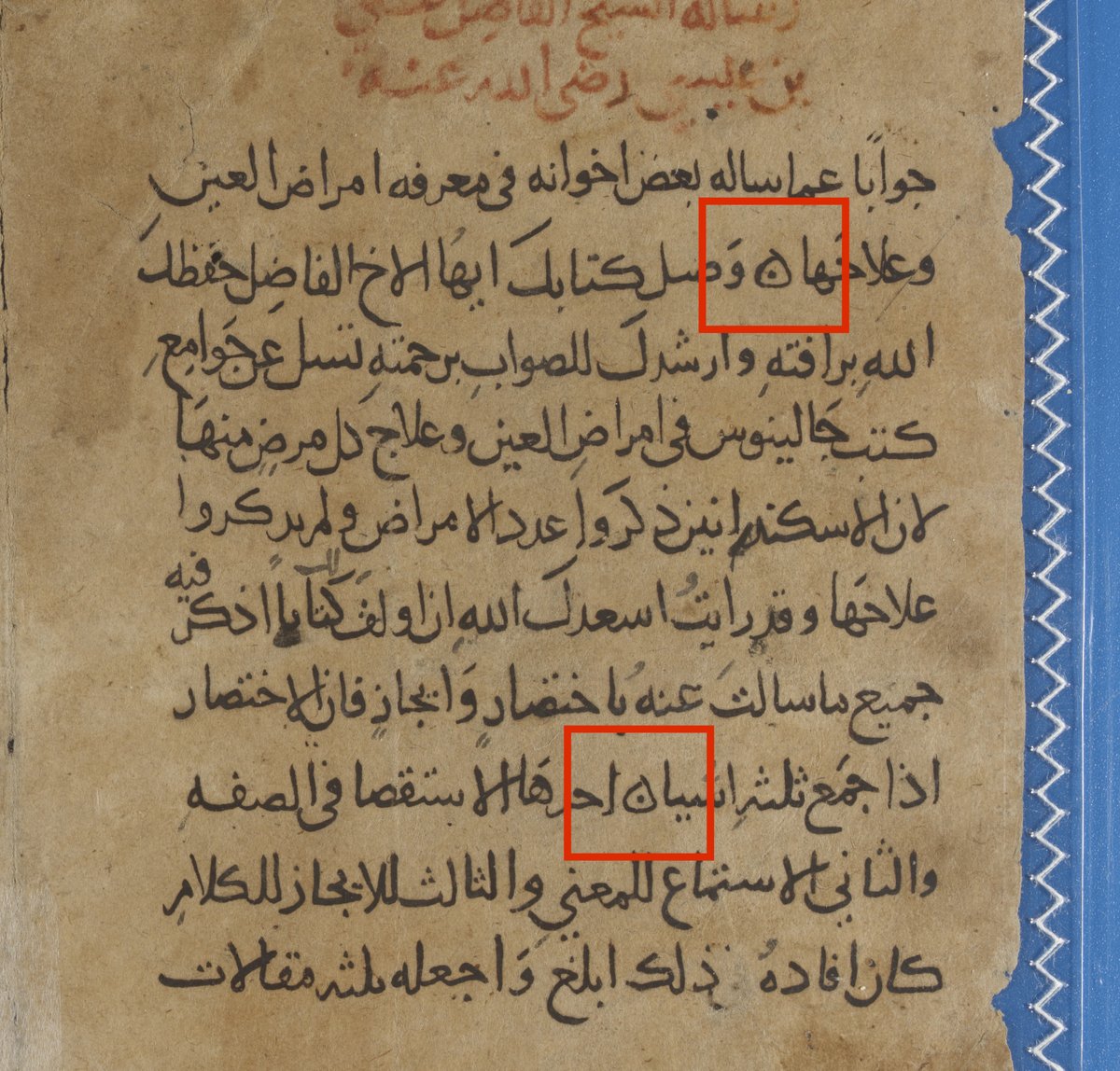1/Going through the old #Genizah Instagram posts (for a secret project) and noticed something. This is the 'Memorandum for Opticians', a book on eye health written in the 11th century by ʿAlī ibn Īsā. There is a note attached that dates this copy to 1142. #arabic #manuscript 

2/This is also the 'Memorandum for Opticians', but this time copied in Hebrew characters for the benefit of Jewish readers. The language is still Arabic, so we refer to the writing system as "Judaeo-Arabic." Both manuscripts came from the same synagogue in Old #Cairo. #hebrew 

3/These folios are from different sections of the text, but it's easy to notice how similar the formatting and layout are with mixed red and black inks. The scribe(s) used black for the main body and red for section subheadings. 



4/None of this is irregular. There are lots of #genizah manuscripts in Arabic and Judaeo-Arabic that mix ink colours for different purposes. Fancy inks are also typical of medical manuscripts (like this one about ointments - fancy manuscript for fancy doctors). 

5/You'll notice that this manuscript also mixes Hebrew and Arabic script. That's partly because medical knowledge was useful for people of all religions, not just Muslims or Jews. So I wonder if the first Judaeo-Arabic manuscript above was a copy of the Arabic one from 1142.
6/It's pretty difficult to prove something like that when each scribe only used one type of script. But the paper sizes are very similar (though only one is properly measured in the catalogue), and both scribes used these little symbols to divide sentences: 



7/Now again, these symbols are pretty common in both Arabic and Judaeo-Arabic manuscripts, so they don't mean that much. My point is that at some time, some Jew, somewhere (probably in Cairo) held an Arabic copy of the Memorandum for Opticians and re-copied it in Hebrew letters.
8/8 That means there were Jewish doctors in medieval Egypt (we knew this already), they spoke Arabic (we knew this too), and they could afford to commission nice books (we also knew this). Basically, we haven't learned anything here. But if you ask me, it's still pretty cool.
@threadreaderapp unroll
• • •
Missing some Tweet in this thread? You can try to
force a refresh





















